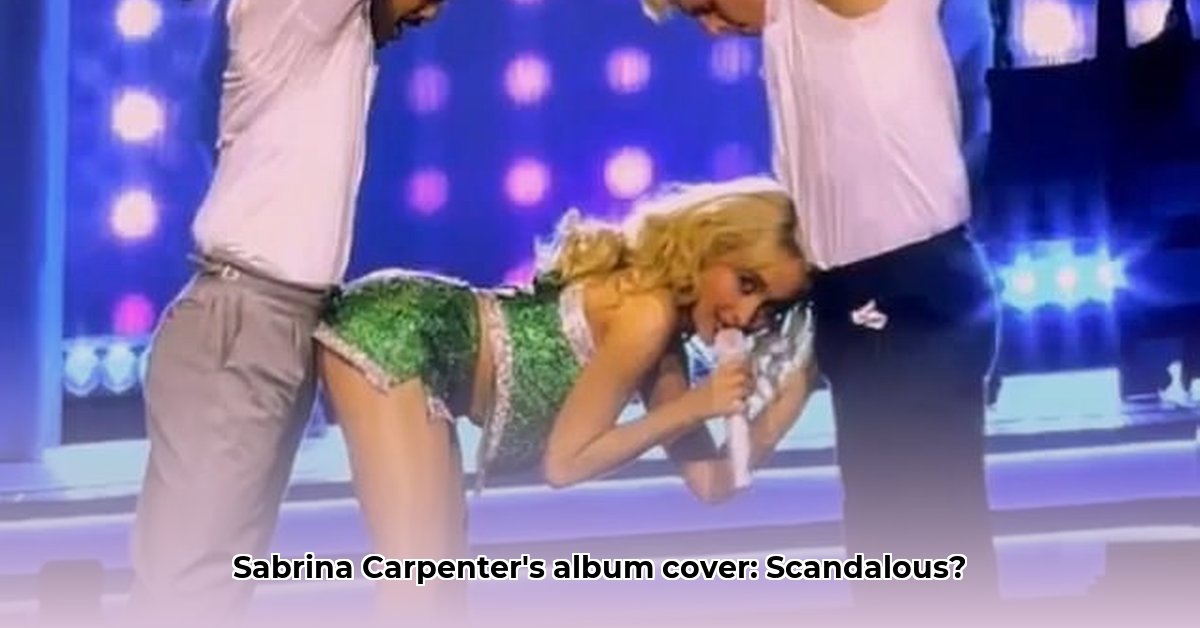
The "Man's Best Friend" Cover: A Bold Statement or a Risky Move?
Sabrina Carpenter's new album, Man's Best Friend, has arrived, but it's not the music that's causing the biggest stir – it's the album cover. The provocative imagery has ignited a fierce debate, dividing fans and critics alike. While some hail it as a bold statement of female empowerment, others decry it as exploitative and tone-deaf. This isn't just about an album cover; it's a reflection of the ongoing conversations around female sexuality, artistic expression, and the double standards faced by women in the music industry.
Sabrina's Brand and Artistic Evolution
Carpenter has consistently cultivated a playful, flirty image throughout her career. This new album art, however, represents a significant departure, pushing the boundaries of her established aesthetic. This calculated risk has undeniably brought increased attention, but the question remains: is it the right kind of attention? The cover's provocative nature forces a re-evaluation of Carpenter's brand and the complexities of female representation in the music industry.
Analyzing the Controversial Imagery
The album cover features Carpenter in a striking pose; details are intentionally left to interpretation, fueling the debate. The ambiguity is both its strength and weakness. While some see artistic merit and a reclamation of the "female gaze," others perceive it as hypersexualization, reinforcing negative stereotypes about women in the media. This division highlights the inherent subjectivity of artistic interpretation and the challenges of navigating such sensitive topics. A deeper analysis reveals both the empowering and potentially problematic aspects of the imagery, creating a complex discussion.
Fan Reactions: A Polarized Response
Social media has become a battleground for opinions. Fans are sharply divided, with some praising Carpenter's bravery and artistic vision while others express disappointment and even anger. The intensity of both the positive and negative reactions highlights not only the cover's impact but also the power of online engagement in shaping public perception. It poses the question: Does the overwhelming volume of online sentiment accurately represent a broader societal response? Quantitative analysis of social media reactions across various demographics would provide more granular insights into this question.
The "Female Gaze" and Double Standards
The controversy highlights the double standards faced by female artists. Male artists often explore similar themes of sexuality with far less backlash. This disparity raises crucial questions about gender representation in the media and the persistent double standards female artists face. The album cover becomes less of an isolated artistic choice and more a symbol of the wider societal conversation about female empowerment and objectification. It’s a conversation desperately needing deeper consideration.
Impact and Future Implications: A Risky Gamble?
The short-term impact is undeniable: heightened media attention and increased engagement. But the long-term consequences are uncertain. Carpenter’s response to the criticism, the public's continued engagement, and the overall impact on album sales will all be significant factors in determining if this was a strategic masterstroke or a damaging misstep. This event serves as a stark reminder of the high-stakes environment in which modern artists operate.
Key Takeaways:
- The album cover's provocative nature has sparked a crucial conversation about female representation in music.
- The intense debate highlights both the power and the pitfalls of artistic risk-taking.
- The controversy underscores the ongoing need for critical examination of gender dynamics in the media.
This incident serves as a potent case study in the complexities of artistic expression, branding, and the intense scrutiny faced by female artists in today's hyper-connected world. The long-term effects will undoubtedly provide further insights into the evolving dynamics of the music industry and its relationship with public discourse.